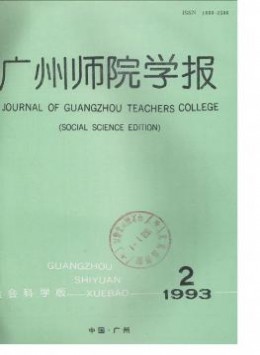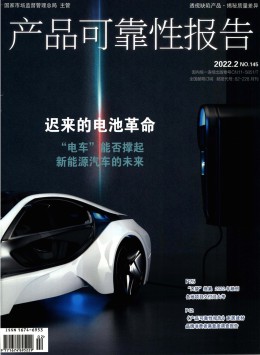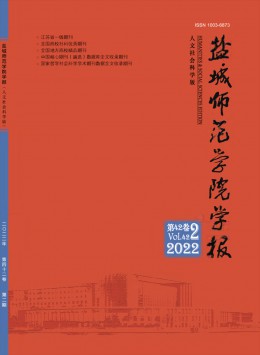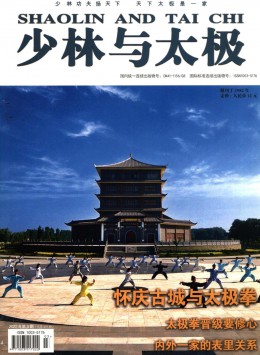如此珍惜精選(九篇)
前言:一篇好文章的誕生,需要你不斷地搜集資料、整理思路,本站小編為你收集了豐富的如此珍惜主題范文,僅供參考,歡迎閱讀并收藏。
第1篇:如此珍惜范文
婦女乳腺腫塊是乳腺科常見癥狀,腫塊種類繁多,包括良、惡性腫瘤,增生及炎癥改變,因此,確定腫塊的性質是每個醫生所面臨的重要課題,也是每位患者及家屬在就診時急切想知道的問題。目前雖然采取了各種檢查辦法,但最后確診仍要依賴于外科活體組織檢查。活體處置過程復雜,費用高,患者精神肉體要遭受不同程度的痛苦,經濟負擔相對較重。而細針吸細胞學檢查患者痛苦小,操作簡單易學,費用低,報告速度快,確診率高,對乳腺癌的早期診斷有著臨床實用價值。乳腺病變嚴重影響著女性身心健康,且發病率越來越高,年齡也越來越年輕化,因此,對乳腺疾病的診斷與治療顯得越來越重要。細針穿刺抽吸細胞學檢查(FNA或FNAC)作為一種簡便、安全、創傷小的診斷方法,相對于鉬靶X線檢查、B超等而言,對乳腺疾病診斷具有獨特的使用價值,可以在較短的時間內得出結果,而且診斷正確率高,文獻報道[1]對乳腺惡性腫瘤的診斷準確率可高達99.6%,診斷符合率較高,現總結分析如下。
資料與方法
83例患者,年齡17~76歲,均為門診和普查篩選患者。患者乳腺均可觸及包塊,鉬靶攝片可見異常現象。
穿刺方法:常規使用5ml注射器,6號針頭。局部皮膚常規消毒后,左手固定腫物,右手持針與皮膚平行或斜行刺入腫塊,進針深度為使針尖達腫塊深度2/3為佳,拉回針栓造成負壓.一般達到3~4ml負壓即可。在腫物處改變方向反復多次抽動,但不可刺穿腫塊,看到針座處有抽出物時,松動針座,撤除針管,拔了針頭,局部酒精棉球按壓,吸出物涂片送病檢。
結 果
83例患者病檢報告中,26例可見癌細胞,42例見增生的上皮細胞,6例見導管上皮細胞、裸核細胞、間質細胞。9例見炎性細胞。83例患者中37例術后病理檢查結果中,3例纖維腺瘤,8例漿細胞性乳腺炎,26例為乳腺癌,分別是硬癌7例,單純癌9例,浸潤性導管癌3例,髓樣癌2例,腺癌3例,副乳腺癌2例。針吸細胞學檢查陽性率與術后病檢符合率100%。
討 論
乳腺疾患的細胞學檢查,始于1914年,NATHAN采用溢液作細胞學檢查發現乳腺癌,1927年GATHRIC首先建立針吸細胞學技術。20世紀70年代后發展為細針吸細胞學[2]。此項技術應用于乳腺,首先在歐洲各國開展,不久傳入我國。乳腺腫塊針吸細胞學診斷相當于活檢,創傷輕微,診斷準確率高,目前已成為世界各國術前病理診斷的重要手段[3]。此法簡單易行,經濟實惠,報告及時,患者多能接受。在操作過程中要細心規范操作,要對患者認真負責,操作中切忌粗暴擠壓腫塊,定位要準確,穿刺深度要根據腫塊的大小變動,尤其當腫塊直徑
細針吸取細胞學檢查意義和局限性:許多婦女乳腺腫物,擬及早確定性質以排除惡性,此法最為簡便、快速,特異性又較高,適用于乳腺腫塊的防癌檢查,并可以多次、多個部位穿刺,觀察治療中病情變化及追蹤某些疾病的進展。對于確定的乳腺良性腫瘤或炎癥性病變,可指導臨床醫生采取恰當的治療措施。對于失去手術時機的乳腺癌患者,針吸細胞學確診后可作為診斷依據,進而行放療或化療。尤其對于沒有病理檢查條件的基層醫院,FNAC的應用價值巨大,可作為確切診斷及術式選擇的有力依據[4]。值得一提的是,對于惡性腫瘤,還可對針吸取出的細胞進行雌、孕激素受體測定,此對擬定治療方案和判定預后具有重要的臨床意義[5],然這于所取細胞數、以及整個操作過程密切相關,應予以高度重視。當然,FNAC也具有一定的局限性,無法確定腫瘤的浸潤范圍,由于抽吸組織少,存在假陽性率和假陰性率,可能導致錯誤診療;對于高度可疑病例,應常規行活檢或術中行快速冰凍病理檢查證實為好。FNAC不能觀察病變組織結構,對乳腺癌的進一步分型常較困難。由于乳腺癌組織的異質性,針吸組織不同可能會導致出現不同的免疫組化結果。有出血傾向的患者,禁忌做此項檢查。FNAC屬于有創操作,有一定的風險,諸如操作意外、引起腫瘤轉移等。不過,國內外大量病例資料已經表明,細針穿刺引起腫瘤種植和血行轉移的可能性微乎其微。
有關針吸能否導致腫瘤擴散及轉移的問題,眾位專家學者關注已久,也是許多患者存在畏懼心理的緣由。但根據針吸組與未針吸組的5年生存率相比效,復習闞秀等總結713例乳腺癌根治術的病例,術前行針吸者315例,未針吸者398例,兩組患者原發瘤大小、淋巴結轉移和病理類型等幾種影響預后的重要因素基本一致,5年生存率針吸組為79.5%,未針吸組為72.7%。2年內死亡率針吸組為7.9%,未針吸組為10.8%[3]。關于針吸對乳腺癌預后無不利影響的報告還有很多。公認的觀點是:雖然針吸必然造成損傷,但與其他各種活檢方式(包括切取、切除、咬取活檢)比較,損傷較小,癌細胞溢出轉移的機會理應也更少些,至少不會比其他活檢危險更大[3]。
為了提高針吸細胞學的診斷性,操作者一定要掌握穿刺技術,必要時可結合B超、鉬靶攝片,抽出物也不能過少,因涂片若細胞量過少不足提供診斷,涂片時也不可過厚或過薄,過厚過薄均可造成細胞擠壓變形,只要正確穿刺,細心觀察,對乳腺癌的早其確診率可大大提高。
參考文獻
1 李天潢,黃受方.實用細針吸取細胞學.北京:科學出版社,2000,50.
2 闡秀.乳腺癌臨床病理學.北京:北京醫科大學、中國協和醫科大學聯合出版社,1993,150.
3 李樹林.乳腺腫瘤學.北京:科學技術文獻出版社,2000,377.
第2篇:如此珍惜范文
【關鍵詞】 乳腺腫塊;細針吸取細胞學;準確率
乳腺腫瘤是我國女性常見的一種疾病 , 且近年來乳腺癌的發病率和死亡率是直線上升趨勢 , 因此 , 早期發現 , 早期診斷對指導臨床治療起到重要作用[1]。細針穿刺細胞學以其取材方便、快速、創傷小、報告快及準確率高 , 因此 , 在臨床中廣泛應用[2]。對乳腺腫物性質判定是最有效的方法之一 , 現將吉林省遼源市婦嬰醫院近年來的 280乳腺腫物穿刺做以下分析。 1 資料與方法
1. 1 患者來源 患者為 2006年 5月至 2010年 5月來我院就診的乳腺腫物患者 , 均為女性年齡在 16~82歲之間 , 其中156例手術患者有病理對照。
1. 2 臨床信息 患者以乳腺腫物就診 , 腫物多為單發 , 少數為多個。部分質硬, 邊界不清。以乳腺外上象限為主。
1. 3 穿刺方法 首先詢問病史 , 了解病情 , 囑患者坐位或仰臥位 , 充分暴露腫物 , 檢查腫塊的大小、硬度、活動度、深度等情況 , 左手固定腫物 , 右手常規碘酒消毒。一次性無菌10 ml持續負壓注射器經皮膚直刺入腫塊反復多次 (6~10次 ), 多點進行抽吸取材 , 將穿刺物置常規玻片 2~4張 , 考慮為癌癥患者, 多取材以制備細胞塊, 鏡檢進行 HE染色。
2 結果
細胞學診斷:良性病變 162例占57.9%。惡性病變 116例占41.4%。可疑乳腺癌 2例占0.7%。
3 討論
細針穿刺細胞學的優點與缺點:細針穿刺細胞學自 70年代以來開始用于乳腺癌的診斷。它的主要優點是快速、簡捷、對組織的損傷小 , 且吸出物多為活細胞 , 及時準確率高。尤其對術前乳腺腫物性質的確定[3]。很多文獻報道準確率在 95%左右 , 尤對惡性腫瘤的敏感性高達98%。本文與病理對照診斷符合率為98.1%。根據國外文獻報告不存在種植轉移及淋巴管的可能 , 但有文獻報告乳腺癌術前針吸細胞學檢查并不影響患者的愈后。有時 , 因為取材少 , 纖維成分多癌組織少, 所以標本中組織結構和細胞間質大部分或完全丟失 , 造成診斷的局限性 , 尤其對一些非典型病變診斷困難。當或進行活組織病理檢查, 以進一步明確診斷。
乳腺細針穿刺細胞學的適應證及禁忌證。
第3篇:如此珍惜范文
資料與方法
68例患者中,男40例、女28例,年齡20~67歲,病程7天~5年。
癥狀與體征:頸部強直,活動時有彈響聲,上肢手指有麻木、放射痛、眩暈、耳鳴,臀叢神經牽拉實驗(+)、椎間孔實驗(+)。X線檢查多提示:頸椎生理曲度改變,椎間隙變窄,骨質增生,椎間盤突出,項韌帶鈣化。
治療方法:①穴位選取:頸椎雙側夾脊穴,神經根型配風池、肩井、曲池,合谷,八邪。椎動型配風池、印堂、聽宮、內關、交感神經型配、風池、曲差、絡卻。②操作方法:針刺夾脊穴時用28號1寸半毫針,用指切進針法,針感以酸,脹麻為度,手法平補平瀉,留針30分鐘。其后用一組疏經通絡、活血化瘀中藥,按照骨質增生治療儀藥物離子導入的方法采取頸部治療。
療效判斷標準:①痊愈:癥狀和體征完全消失;②顯效:癥狀和體征明顯減輕,僅在大幅度活動時頸部才有些不適;③無效:經治2個療程癥狀體征無改善。
結 果
68例患者經2個療程治療,痊愈49例,顯效17例,無效2例。
例1:患者,65歲,教師,2008年5月6月就診,半年前出現右上肢疼痛、麻木、發涼,同時感頸部強直,曾口服中成藥,肌注B12、B1效果不顯。體查右側頸部僵硬、右肩部酸脹、椎肩孔壓縮實驗(+)、臀叢神經牽拉實驗(+),X線片顯示:頸4~6椎體骨質增生,頸椎生理曲度變直。診斷:頸椎病(神經根型)經針刺結合藥離子導入治療2個療程痊愈,隨訪半年未復發。
第4篇:如此珍惜范文
[關鍵詞] 乳腺腫塊;細胞學;病理學;診斷率
[中圖分類號] R737.9 [文獻標識碼] B [文章編號] 1673-9701(2017)01-0118-03
乳腺癌為女性常見惡性腫瘤,全球每年新增癌癥患者中乳腺癌患者高達10%[1]。近年來,隨著社會經濟不斷發展,生活及工作節奏不斷加快,乳腺癌發病率逐年升高,且不斷呈年輕化發展趨勢,給患者的健康及生命安全造成嚴重威脅[2]。早診斷為提高乳腺癌患者生存率的有效手段,對局部晚期乳腺癌患者一般行術前新輔助化療,而新輔助化療需準確的病理學診斷結果,所以對乳腺癌患者早診斷與規范化治療具有十分重要的臨床應用價值[3]。細針穿刺細胞學(fine needle aspiration cytology, FNAC)為新興的腫瘤診斷方法,以細針穿刺病灶、取少量的細胞成分進行涂片檢查,具有操作簡便、微創、經濟等優點,在臨床上得到越來越廣泛的應用[4]。為進一步對FNAC在乳腺腫塊患者診斷中的應用價值進行分析探討,本研究對我院2015年1月~2016年10月收治的382例乳腺腫塊患者的臨床資料進行回顧性分析,現將結果報道如下。
1 資料與方法
1.1 一般資料
選擇我院2015年1月~2016年10月收治的382例乳腺腫塊患者作為研究對象,均為女性,年齡23~76歲,平均(44.73±5.09)歲;腫塊直徑0.9~7.4 cm,平均(4.23±1.17)cm。所有患者均行FNAC檢查。納入標準:①超聲影像資料完整;②經手術病理學檢查證實為乳腺腫塊。
1.2 方法
FNAC:囑患者取坐位,定位穿刺點,并做好標記,對穿刺部位進行常規消毒。穿刺者用左手拇指與食指按壓腫塊與周圍皮膚,右手持注射器(20 mL)與表面皮膚保持45°方向進針,在進入腫塊之后以右手中指將針芯拉出,保持1~3 mL使得注射器呈負壓狀態,于腫塊內多方向、多角度抽吸2~3次,再慢慢放松針芯,讓負壓消失,然后快速拔針,對穿刺部位壓迫止血。將針頭去除,后拉針筒,使空氣進入注射器,再插入針頭,將樣品推至載玻片涂片,以酒精(95%)固定10 min,染色,進行顯微鏡觀察。
組織病理學:手術過程中將送檢腫塊M織做不同切面,將載玻片附在有切面的腫塊組織上,做4張印片,以HE染色法進行處理,鏡檢之后進行細胞學診斷。
1.3 評價標準
①以Bethesda標準進行分級[5]:Ⅰ級(良性病變):無異性細胞;Ⅱ級(非典型性病變):存在異性細胞,無惡性細胞;Ⅲ級(可疑惡性病變):存在非典型細胞,無法確定是否為惡性;Ⅳ級(惡性病變):存在惡性腫瘤細胞。
②以組織活檢結果作為參考,分析FNAC的診斷準確率、特異性、敏感性、假陽性率及假陰性率。診斷準確率=(真陰性+真陽性)/總例數×100%。敏感性(真陽性率)=真陽性/(真陽性+假陽性)×100%。漏診率(假陰性率)=假陰性/(真陽性+假陰性)×100%。特異性(真陰性率)=真陰性/(真陰性+假陰性)×100%。誤診率(假陽性率)=假陽性/(真陰性+假陽性)×100%[6-8]。
1.4 統計學處理
將數據結果錄入SPSS22.0軟件包處理分析,計數資料以[n(%)]形式表示,采用χ2檢驗,計量資料以(x±s)形式表示,采用t檢驗,P
2 結果
2.1 FNAC與組織病理學檢查結果比較
382例乳腺腫塊患者的FNAC檢查結果:Ⅰ級341例(89.27%),Ⅱ級19例(4.97%),Ⅲ級4例(1.05%),Ⅳ級18例(4.71%)。組織病理學檢測結果:Ⅰ級337例(88.22%),Ⅱ級23例(6.02%),Ⅲ級4例(1.05%),Ⅳ級18例(4.71%)。FNAC與組織病理學檢測結果比較無明顯差異(χ2=0.40,P>0.05),見表1。
2.2 FNAC診斷結果
382例患者行FNAC診斷的準確率為98.43%(376/382),敏感性為78.57%(22/28),假陰性率為17.14%(6/35),特異性為98.33%(354/360),假陽性率為0。
3討論
乳腺病變對女性身心健康造成嚴重影響,大多患者是在發現乳腺腫塊之后才就診,其中乳腺癌為婦科常見惡性腫瘤,給患者的健康甚至生命安全造成嚴重威脅,其發病率逐年升高,且呈年輕發展趨勢,而如何提高術前診斷的特異性與敏感性,已經成為臨床研究的重點。與X線、鉬靶、B超等相比,FNAC操作簡便、創傷小、準確率高、經濟實用,為乳腺疾病診斷的重要方法[9]。FNAC能夠為乳腺腫瘤的術前輔助化療提供定性診斷,并為晚期乳腺癌行化療或放療、乳腺癌術后局部浸潤或復發是否合并淋巴結轉移及臨床醫師為患者制定手術方案提供重要的臨床參考[10,11]。本研究結果顯示,382例患者行FNAC診斷準確率為98.43%(376/382),敏感性為78.57%(22/28),特異性為98.33%(354/360)。李志華等[12]研究指出,對乳腺腫塊患者行FNAC診斷的準確率為79%~98%。本研究結果與上述報道一致,證明FNAC可以準確反映出乳腺的病變情況。
FNAC檢查有一定局限性,主要表現為假陰性[13]。本研究中,FNAC檢測的假陰性率為17.14%,原因可能如下[14,15]:①針吸穿刺及涂片制作原因,腫塊與周圍組織分界模糊,不能確定腫瘤的范圍,在穿刺過程中沒有真正進入到腫塊內部;因腫塊部位較深,腫塊小,或者腫塊雖然大,但是未能采集到有效的細胞成分;抽吸組織過少,或者血液量多導致細胞量少;未嚴格按照規范制作涂片。②對部分組織病理學類型乳腺惡性腫瘤的診斷率較低,如導管上皮不典型增生及原位癌等。而浸潤性小葉癌的組織學特征為細胞成分較小,間質較為豐富,在細胞涂片上顯示為細胞稀疏分布,體積小,特異性不典型,FNAC容易誤診。③因細胞學固有的局限性,在細胞學上乳腺葉狀腫瘤與纖維腺瘤的區別較難,狀癌與良性狀瘤細胞學表現接近。④操作程序不規范。⑤醫師臨床經驗不足:診斷醫師對乳腺腫瘤的細胞學特點掌握不足,特別是小細胞癌或高分化癌,容易造成漏診。
本研究中,經FNAC檢查確診的22例惡性病變患者經病理學檢查均證實為乳腺癌患者,未出現假陽性,證明FNAC為乳腺癌診斷的可靠方法,能夠為臨床手術提供可靠依據。
筆者結合多年臨床經驗認為,為提高FNAC的診斷率,應注意以下幾點:①應熟練掌握穿刺技術,嚴守操作規范。②樣本采集應到位、充分,對位置較深或腫塊較小患者可行B超引導下穿刺,對腫塊較大者可行多方位穿刺,對取材不足者需重新進行取材。③在針吸穿刺之前應對患者的病史與影像學資料進行全面了解,乳腺觸診要仔細,降低單純采用細胞學檢查造成診斷片面性。④對高度可疑患者,手術過程中應進行常規病理學檢查或快速冷凍切片檢查進一步診斷,以降低假陰性的診斷率,提高診斷準確率。⑤診斷醫師要熟練掌握診斷標準,以提高細胞學診斷能力。
總而言之,對乳腺腫塊患者行細針穿刺細胞學具有操作簡便、經濟實用、創傷小、準確率高等優點,有較高的臨床應用價值。
[參考文獻]
[1] Dutta SK,Chattopadhyaya A,Roy S. Evaluation of fine needle aspiration and imprint cytology in the early diagnosis of breast lesions with histopathological correlation[J]. Indian Med Assoc,2013,99(8):421-423.
[2] Kocjan G. Needle aspiration cytology of the breast:Current perspective on the role in diagnosis and management[J]. Acta Med Croatica,2013,62(4):391-401.
[3] Nguansangiam S,Jesdapatarakul S,Tangjitgamol S. Accuracy of fine needle aspiration cytology from breast masses in Thailand[J]. Asian Pac J Cancer Prev,2013,10(4):623-626.
[4] Collins LC,Achacoso N,Nekhlyudov L,et al. Relationship between clinical and pathologic features of ductal carcinoma in situ and patient age:An analysis of 657 patients[J].Am J Surg Pathol,2014,33(12):1802-1808.
[5] Lam WW,Chu WC,Tang AP,et al. Role of radiologic features in the management of papillary lesions of the breast[J].Am J Roentgenol,2016,186(5):1322-1327.
[6] Manfrin E,Falsirollo F,Remo A,et al. Cancer size,histotype,and cellular grade may limit the success of fine-needle aspiration cytology for screen-detected breast carcinomap[J]. Cancer Cytopathol,2014,117(6):491-499.
[7] 杜i,任道舉,凡蘭. 超聲引導下細針穿刺乳腺包塊細胞學檢查的臨床探討[J]. 當代醫學,2015,21(7):25-26.
[8] 王菁菁,李俊. 國際細針穿刺細胞學的新進展文獻分析[J].安徽醫藥,2013,17(2):320-321.
[9] 葉倩,饒金,易艷平,等. 乳腺穿刺活檢標本中交界性病變的診斷和治療問題[J]. 臨床與實驗病理學雜志,2014, 10(1):19-21.
[10] 張樂,張利群. 高頻超聲引導粗針穿刺活檢在乳腺腫塊臨床治療180例分析[J]. 中國實用雜志,2015,32(24):47-48.
[11] 劉碧華,鄭曉林. X 線立體定位穿刺活檢對不可觸及乳腺病變病理診斷準確性的分析[J]. 中國CT和MRI雜志,2015,13(7):57-60.
[12] 李志華,常愛敏,吳剛. 基層醫院 76 例乳腺腫塊細針穿刺細胞學與組織病理學對照分析[J]. 中國現代醫生,2016,54(6):88-90.
[13] 劉軍,葛斌,王婧欣,等. 無超聲引導粗針穿刺診斷乳腺癌在基層醫院的應用探討[J]. 中國醫學創新,2015, 12(14):118-120.
[14] 李霞,王廣珊,錢葉芳. 30例乳腺黏液癌的超聲征象及與病理分型的對照分析[J].中國現代醫生,2015,53(30):95-96.
第5篇:如此珍惜范文
[關鍵詞] 乳腺病變;磁共振動態增強掃描;擴散加權成像;Meta分析
[中圖分類號] R455.2 [文獻標識碼] B [文章編號] 1673-9701(2017)04-0110-06
Meta analysis of differential diagnosis value of benign and malignant breast lesions by dynamic contrast enhanced magnetic combined with diffusion weighted imaging
SHI Rui1 WANG Yiting1 WANG Yang1 ZHANG Lichao1 ZHANG Jin2
1.Department of Medical Imaging, Shanxi Medical University, Taiyuan 030001, China; 2.Shanxi Medical University Second Hospital, Taiyuan 030001, China
[Abstract] Objective To comprehensively evaluate the differential diagnostic value of dynamic contrast enhanced magnetic(DCE-MRI) combined with diffusion-weighted imaging(DWI) in benign and malignant breast lesions by Meta analysis. Methods Relevant literature publically released from January 2007 to October 2016 in Chinese Academic Journals(online version), Wanfang Medical Data Service Platform, Chinese Biomedical Database, PubMeb Central-NLM Journal, Cochrane Library, Ovid Evidence-based Medicine Database, Science Direct Foreign Language Database and other databases were searched by computer. The literature was screened according to the specified inclusion criteria, and the data information was extracted. Meta-analysis was used to statistically analyze the extracted data. Results A total of 15 articles were included, and 910 lesions were included. The literature was homogeneous, and the fixed effect model was used to calculate the overall sensitivity, specificity was 92% and 88% respectively. The area under the ROC curve was 0.96, 95%CI(0.94, 0.97). Conclusion DCE-MRI combined with diffusion weighted imaging has a high diagnostic value in the diagnosis of benign and malignant breast lesions. It is an accurate and noninvasive method widely used in breast imaging.
[Key words] Breast lesions; Dynamic contrast enhanced magnetic(DCE-MRI); Diffusion-weighted imaging (DWI); Meta analysis
乳腺癌是女性最常的惡性腫瘤和死亡原因,據統計,2012年全球約有170萬例患者及521 900例死亡患者,占女性癌癥患者的25%,占死亡病例的15%[1]。早期定性診斷乳腺病變對治療方案的制定、預后估計、遠期生存率估算有至關重要的作用。近年來,磁共振掃描被廣泛應用于乳腺病變的診斷,諸多文獻針對DWI聯合DCE-MRI對乳腺良惡性病變的診斷價值進行了研究,但研究結論不盡相同[2-5],甚至相反[6]。本研究應用循證醫學統計學方法,匯總分析國內外關于DCE-MRI聯合DWI診斷乳腺病變的大量文獻,以綜合定量評價DCE-MRI聯合擴散加權成像鑒別乳腺病變的診斷價值。
1 資料與方法
1.1一般資料
計算機檢索中國學術期刊(網絡版)、萬方醫學數據服務平臺、中國生物醫學數據庫、PubMeb Central-NLM期刊全文庫、Science Direct外文數據庫等數據庫中2007年1月~2016年10月以來公開發表的文獻。中文檢索詞“乳腺”、“動態增強掃描”、“擴散加權成像”、“彌散加權成像”,英文檢索詞“diffusion weighted imaging”、“dynamic contrast enhanced magnetic”、“DCE-MRI”、“DWI”“diffusion magnetic resonance imaging”、“breast”“mammary”。限制研究對象為“人類”,對檢索結果進行2次篩查,除外有關綜述、專家述評信件、病例報道、社論等文獻類型。
1.2 納入標準
根據Cochrane協作網篩選與診斷試驗方法組中關于診斷試驗性研究的納入標準進行[7],具體納入標準制定如下:(1)研究對象為人類;(2)中、英文文獻;(3)研究病灶數≥30;(4)運用DCE-MRI聯合擴散加權成像研究乳腺良、惡性病變的前瞻性、回顧性文獻;全部病灶均有術后或穿刺活檢病理結果;(5)研究報道提供了良、惡性病灶的數目、ADC平均值及標準差、能夠直接或間接得到該研究的真陽性值(true positive values,TPV)、假陽性值(false positive values,FPV)、真陰性值(true negative values,TNV)、假陰性值(false negative values,FNV)、敏感度(sensitivity,Se)、特異度(specificity,Sp)、診斷準確度(accuracy rate,AC)、陽性預測值(positive predictive value,PPV)、陰性預測值(negative predictive value,NPV)、陽性似然比(positive likelihood ratio,PLR)、陰性似然比(negative likelihood ratio,NLR);(6)包括期刊全文和學位論文。
1.3文獻內容提取
由2名研究者獨立進行文獻質量評價并提取數據資料,如遇分歧兩者協商解決。提取內容包括:第一作者、發表時間、患者數、病灶總數、良、惡性病灶數目、患者年齡范圍、平均或中位年齡、研究類型;TPV、FPV、TNV、FNV、Se、Sp、AC、PPV、NPV、PLR、NLR等表格信息。
1.4 統計學分析
采用Stata 12.0軟件對所采集的數據進行匯總分析。
1.4.1 異質性檢驗 采用Q檢驗,Q服從自由度為k-1的分布,Q值越大,其對應P值越小。假設H0∶n個研究結果來自同一整體,若P>0.05,則不拒絕H0,說明各研究之間無異質性,合并效應量時應采用固定效應模型;若P≤0.05,則拒絕H0,說明各研究之間存在異質性,合并效應量時采用隨機效應模型。
1.4.2 Meta分析 按照異質性檢驗所得效應模型,采用Logit變換對各個研究的敏感度和特異度進行變換,再依權重大小進行匯總,最后進行反Logit變換得出加權匯總敏感度和特異度及相應的95%可信區間,并繪制森林圖。
1.4.3 建立匯總受試者工作特征曲線(summary receiver operating characteristic curve,SROC曲線) 繪制SROC曲線,并由軟件自動計算出曲線下面積(area under curve,AUC),曲線越接近坐標軸左上角,AUC則越接近1,表明該檢查的診斷價值越高。
1.4.4 發表偏倚 對合并效應量采用Deeks線性回歸分析法進行發表偏倚識別,若P>0.5,則提示不存在發表偏倚。
2 結果
2.1 文獻檢索結果
初步納入文獻172篇,排除不符合納入標準、不能獲得全文、無法獲得統計數據的文獻,共157篇,最終納入文獻15篇。
2.2 數據提取
研究病灶共計910個,病理確診惡性病灶468個,良性病灶442個,DCE-MRI聯合DWI診斷乳腺病變良惡性的敏感性范圍80%~100%[8,9],特異性范圍 66.7%~94.7%[10,11]。納入文獻的信息提取見表1、2。
2.3數據分析
2.3.1 異質性檢驗 Q=15.72,自由度為14,P>0.05,接受同質性假設,故采用固定效應模型進行加權定量合并,森林圖見圖1。
2.3.2 Meta分析 匯總加權敏感度、特異度、陽性似然比、陰性似然比、診斷比值比及95%CI分別為0.92(0.89,0.95)、0.88(0.82,0.92)、7.76(5.45,11.06)、0.09(0.06,0.13)、88.89(50.20,157.95),見表3。Fagan’s 圖示(圖2)DCE-MRI聯合DWI判斷陽性時,惡性概率增加至77%;DCE-MRI聯合DWI判斷陰性時,惡性概率降低至4%。
2.3.3 建立SROC曲線匯總 ROC曲線下面積0.96,95%CI(0.94,0.97)(圖3)。
2.3.4 發表偏倚 對合并效應量采用Deeks線性回歸分析法(P>0.5)進行發表偏倚識別,未顯示發表偏倚。
3 討論
近年來,Meta分析被越來越廣泛的應用于醫學領域,是許多系統評價方法的核心[23]。Meta分析可將數個獨立的、同類型的研究結果進行匯總分析,充分擴大了樣本量,并得到定量合并結果,提高了初步試驗結論的強度和可信度,降低了大規模臨床試驗的成本,對于疾病的診斷、治療、危險度評價、干預設施、預防決策以及衛生決策等方面起著重要作用[24]。
磁共振檢查是乳腺影像學檢查的重要方法,乳腺MRI檢查應有以下十項適用證:治療前、高危婦女篩查、新輔助化療療效評價、溢液、乳腺增生或接受過乳腺植入物的患者、原位癌、乳腺癌復發、炎性乳腺癌、傳統X線或超聲檢查認為有可疑病灶的患者、男性乳腺[25,26]。DCE-MRI是不同乳腺MRI檢查的基礎,可同時提供形態學和功能學方面的雙重信息,其診斷乳腺癌具有較高的敏感性[8,10],但由于乳腺良、盒宰櫓及正常組織的相互重疊,其診斷特異性較低[27],為了克服特異性較低的限制,很多研究人員將其他功能MR成像技術聯合應用于乳腺MRI檢查,例如擴散加權成像。
本文采用Meta分析方法對DCE-MRI聯合DWI診斷乳腺良惡性病變的敏感度、特異度進行系統評價,得到匯總敏感度、特異度及95%CI分別為0.92(0.89,0.95)、0.88(0.82,0.92),SROC-AUC為 0.96,與Li Zhang等[28]學者的研究結果(AUC-SROC為0.94)相近,說明DCE-MRI聯合DWI對乳腺良、惡性病變具有較高的診斷價值,是一種可廣泛用于乳腺影像學檢查的精確的、非創傷性的檢查方法。
DWI的成像原理是利用細胞外液中水分子的擴散運動獲取圖像,可敏感的反映病理及生理狀態下組織和細胞微環境中水分子的變化[29]。由DWI圖像得出的ADC圖及表觀彌散系數ADC值可定量反映局部組織變化及腫瘤進展情況,ADC值與腫瘤細胞之間存在直接關系[30]。據報道,DWI具有較高的敏感度和特異度,Cennet Sahin等[31]將1.03×103 mm2/s作為乳腺良惡性病灶的ADC閾值,特異度及陰性預測值較高均為100%,敏感性為88.5%;陳欣等將[32]1.2×103 mm2/s作為ADC閾值,經Meta分析得出DWI診斷乳腺良惡性病變的匯總敏感度和特異度分別為86%和80%;另一匯總964乳腺病灶的Meta分析也得出了相似的結論,匯總敏感度和特異度分別為84%、79%[33];ADC值可提高乳腺各種類型和大小可疑病灶的陽性預測值[34],DWI診斷乳腺病變較DCE-MRI有較低的陰性預測值,因此不可取代DCE-MRI,但DCE-MRI聯合DWI可顯著提高診斷BI-RADS 3級和4級病灶的特異性[35]。基于乳腺良、惡性病變之間ADC值和血流動力學均存在明顯差異[19],及DCE-MRI可提供正常與異常組織間微循環的差異,將DCE-MRI和DWI聯合應用。優勢互補,以提高乳腺良、惡性病變的診斷能力,本研究分析結果也表明,DCE-MRI聯合DWI匯總ROC曲線下面積為0.96,匯總診斷比值比為88.89(大于1),匯總陽性似然比為7.76,說明DCE-MRI聯合DWI正確診斷乳腺病灶為惡性的可能性是錯誤診斷為惡性的7.76倍,匯總陰性似然比分別為0.09,說明DCE-MRI聯合DWI錯誤診斷乳腺病灶為良性的可能性是正確診斷為良性的0.09倍,提示DCE-MRI聯合DWI對乳腺良、惡性病變有較高的鑒別診斷能力,兩者聯合可以提高診斷的準確性。
本研究利用系統評價的方法,擴大了研究的病例來源,增加了樣本量,提高了研究的可信度,但也存在較多的局限,如本研究并未對各研究的良惡性病灶ADC值及診斷閾值進行匯總分析,是由于各研究選取的b值高低差異較大,致使個研究ADC閾值相對較高或較低,相對較高的閾值可在乳腺癌篩查過程中盡可能減少漏診,相對較低的閾值可減少假陽性值[22],對此筆者希望今后可有相對較統一的標準以便進一步分析研究。
[參考文獻]
[1] Lindsey ATorre,Freddie Bray,Rebecca L Siegel,et al. Global Cancer Statistics,2012[J]. Ca Cancer J Clin,2015, 65(2):87-108.
[2] Sibel Kul,Aysegul Cansu,Etem Alhan,et al. Contribution of diffusionweighted imaging to dynamic contrast-enhanced MRI in the characterization of breast tumors[J].AJR,2011,196:210-217.
[3] Qinghua Min,Kangwei Shao,Lulan Zhai,et al. Differential diagnosis of benign and malignant breast masses using diffusion-weighted magnetic resonance imaging[J]. World Journal of Surgical Oncology,2015,13:32-38.
[4] Sebnem Orguc,Isil Basara,Teoman Coskun. Diffusion-weighted MR imaging of the breast:Comparison of apparent diffusion coefficient values of normal breast tissue with benign and malignant breast lesion[J]. Singapore Med J,2012,53(11):737-743.
[5] Guangwei Jin,Ningyu An,Michael A Jacobs,et al. The Role of Parallel Diffusion-Weighted Imaging and Apparent Diffusion Coefficient(ADC)Map Values for Evaluating Breast Lesions:Preliminary Results[J]. Acad Radiol,2010,17(4):456-463.
[25] Sardanelli F,Boetes C,Borisch B,et al. Magnetic resonance imaging of the breast:Recommendations from the EUSOMA working group[J]. Eur J Cancer,2010,46(8):1296-1316.
[26] Ritse M Mann,Corinne Balleyguier,Pascal A Baltzer,et al. Breast MRI:EUSOBI recommendations for women's information[J]. Eur Radiol,2015,25:3669-3678.
[27] Mary C Mahoney,Constantine Gatsonis,Lucy Hanna,et al.Positive Predictive Value of BI-RADS MR Imaging[J]. Radiology,2012,264(1):51-58.
[28] Li Zhang,Min Tang,Zhiqian Min,et al. Accuracy of combined dynamic contrast-enhanced magnetic resonance imaging and diffusion-weighted imaging for breast cancer detection:A meta-analysis[J]. Acta Radiologica,2016,57(6):651-660.
[29] Le Bihan D,Breton E,Lallemand D,et al. MR imaging of intravoxel incoherent motions:Application to diffusion and perfusion in neurologic disorders[J]. Radiology,1986, 161:401-407.
[30] Hongmin Cai,Yanxia Peng,Caiwen Qu,et al. Diagnosis of Breast Masses from Dynamic Contrast Enhanced and Diffusion-Weighted MR:A Machine Learning Approach[J].PloS One,2014,9(1):e87387.
[31] Cennet Sahin,Erkin Ar?Dbal. The role of apparent diffusion coefficient values in the differential diagnosis of breast lesions in diffusion-weighted MRI[J]. Diagn Interv Radiol,2013,19:457-462.
[32] 欣,張毅力,張秋娟,等. MR擴散加權成像對乳腺病變良惡性鑒別的 Meta分析報告[J]. 中華放射學雜志,2008,42(6):582-585.
[33] Xin Chen,Wen-ling Li,Yi-li Zhang,et al. Meta-analysis of quantitative diffusion-weighted MR imaging in the differential diagnosis of breast lesions[J]. BMC Cancer,2010,10:693.
[34] SC Partridge,WB DeMartini,BF Kurland,et al. Quantitative diffusion-weighted imaging as anadjunct to conventional breast MRI for improved positive predictive value[J]. American Journal of Roentgenology,2009,193(6):1716-1722.
第6篇:如此珍惜范文
青春如同流水,不停地逝去。 當我們發現時,已經快要到流盡了。但有些人卻懂得去珍惜、去憐愛它。
我們也似如此、不管是正在享受著青春的陽光,還是已經不能挽回的曾經。但我們知道青春是如此的純潔,它是無邪無暇的、是我們生命中最難以忘懷的一段既短而又“漫長”的歲月、我們應去珍惜它,愛護它,捍衛它。
如今,我也是正在青春的陽光下沐浴、這種時刻是令人舒暢的。我不知道青春為什么會如此吸引著我們,不知道青春為什么這么讓人難以忘懷。我爸媽也經常跟我說起那曾經的快樂、曾經的悲傷,但并不是跟我說什么事、而是再和我述說他們曾經的青春、是如此多彩,如此悲歡。他們回味著,也在對我說要珍惜現在,珍惜現在的每一分、每一秒。
讓我們擁抱青春、感悟青春吧!!
第7篇:如此珍惜范文
2007年五月的一天早上 ,爸爸打開電視收看新聞,當我看到九江大被船撞塌這個消息時,我的心就像被一把鐵錘敲擊.我當時第一感覺就是生活多么無常!
電視機繼續報道有關九江塌橋的新聞:原來九江大橋于凌晨5:14坍塌,一輛運沙船的司機因疲勞駕駛大霧、看不見錯把施工燈看成導行船燈和超重而撞上橋墩.所以使正在這一塊橋上行走4輛車的車紛紛掉下深海. 其中有販買蔬菜生意的陳氏兄弟,在運貨歸回中死去,還有的到臺山運鮮花到廣州開早市的中年婦女和司機在去的途中掉下去……轉眼間,他們和自己的親人陰陽相隔了!
慨嘆人生無常,命運總是像天上的白云般變幻莫測而讓人捉摸不定. 生活中有太多的例子,讓人感到不可思議。不能接受。然而,他們實實在在的發生了,就在你的眼前。由此,我們可知生命是如此的脆弱,生活中有太多的不確定因素,我們應當珍惜眼前的生活.
第8篇:如此珍惜范文
“學會珍惜,小心翼翼”這是一聲感喟,記得最初看到這句話是余秋雨在說朋友的。他說人們來一次世間不容易,有一次相聚又更為不易,稱一聲朋友又是何其的不易,“學會珍惜,小心翼翼”。
雖然今天重新回憶那篇文章似乎有些浮華,但是這段話卻的確可算作警句。回想從小到大有時候我們失去了太多。
念過多年的書,有過無數的同學。曾經有過很要好的同學,或者是很欽慕的同學,甚至是暗暗喜歡的同學……在今天都差不多失去了聯系。一次升學、一個工作、一個天各一方的借口便造就了“別來不寄一行書,尋常相見了,卻道不如初”。也許我是個害羞的人,有時候碰到想要結交的人、或者心中歡喜的人,見面了竟然臉紅耳赤,甚至不知道說什么,想要早點離開,算作是逃出去。也許所謂癡人的美夢總是害怕真得來臨的。在母校的一次重逢,在大學的一次巧遇,在異地的一次暢談……卻想來都是匆匆而過,變得些回憶里的滿目瘡痍。
當然,網上可以很常見的一些喊口號式的祝福,而且多用淘寶體。親,一定要幸福哦!親,祝福你!……親來親去,實際上心里不過是習慣性的應付而已。也許有這想法只是我心里的陰暗,也許有時候確實如此,也許人生中的的確確需要些俗氣的應付。現在紛繁復雜的信息世界構成了無形的網,網中流落的句子,我想就應了那句“怪怪奇奇石,誰能辨丑妍!”而我們在信息中也只能“縱浪大化中,不喜亦不懼”,漸漸地變得無情。
佛家有六如之說,人生如夢、如幻是、如泡、如影、如霧、如電。有人說既然如此又何必太過在意流水匆匆,何必珍惜、無須翼翼。然而我想,也許并非如此。“人生不滿百”,既然終歸要走向一灘沙土,那又為何不再過程中體味些除了醉生夢死外的真情。人區別于動物的一個特征就是會用腦來思考,或者說有思想。既然人有這個特性,也就有必要要去成為人,也就有必要去在精神世界中寄托到萬里之外。所以,我們不應該忘記曾經的念或紀。就算這種不知何所來的思憶只是一廂情愿的苦,那也無妨。也許有人會說這不過是為了文人添了個寫作素材罷了。確實如此,但之所以寫作中有這個素材,也就是說明他并沒有忘卻。
可又為何要不忘呢?因為曾經沒有珍惜,便有了遺憾。有了遺憾,自然有了回憶。回憶縱然是美的,但也是苦澀的。苦澀的人自然有苦澀的夢。對眼前,很多會說存在即合理,并抬出黑格爾為其張目。還有很多人口號標語式的吶喊珍惜眼前、珍惜現在。但實際上有幾個人又能做得到呢?對于親朋、乃至戀人,在一起時候并沒有幾個真的珍惜。大多數人要么是自以為是,認為熟悉了就可以為所欲為;要么就是真去相敬如賓,顯得虛情假意。如何珍惜?這又是一個極大的命題。
第9篇:如此珍惜范文
有的時候,總是聽到有人在懊惱沒有珍惜時間,因而總認為時間不足夠。正是那一次的經歷,使我慢慢地開始珍惜時間。
那一次,讓我的感觸很深。當時有一次考試臨近,同學們都在拼命地復習著,如同臨敵而戰;而我卻在悠然自得地玩耍,一邊看著同學們努力地復習著,一邊想:唉!用得著這么用功嗎,不就是一次普通的考試嘛,難不成考試前這么看看就能拿個一百分。等到考試時,同學們都齊刷刷地拿起筆來寫,可是我卻坐在那里拿著筆一個勁地發呆。因為之前我根本就沒有復習,所以對于我而言,這些題目簡直就象天書一般。再看看別的同學,有的在冥思苦想,有的還在不停地寫著,這給我制造了很多壓力,終于在最后的時候,我也是硬著頭皮勉強做了一些。由于是剛考完試,同學們仍然在興致勃勃地討論著,看著他們一副歡呼雀躍的樣子,我的心就如刀割。就在這時,小紅興奮地跑來對我說:“喂,看你垂頭喪氣的樣子,考得怎么樣啊?你知道嗎,我這次好像對了不少了耶。”她一說,可把我的心給勾了起來:“哼!是又怎么樣,不就是一次考試嘛。要是我之前有時間復習,說不定比你還厲害。”當我一說出這話,立刻遭到她的反駁:“你還說呢,我們都在復習,你卻在偷懶,怎么會沒時間呢?時間是靠人一點點擠出來的,不是你說有就有,沒就沒的。只要你懂得利用每一分每一秒,就能成功。”我一時被她駁得無話可說,的確,每當我想要認真復習時,心就不安分地動起來,往往都是半途而廢。其實,人的一生很短暫,時間也不會很多,但有的人卻能很出色,因為他們把握了時間。有的人荒廢光陰,時間就會變得很漫長,莎士比亞說過:“拋棄時間的人,時間也會拋棄他”。說的正是這個道理吧。所以我們必須珍惜我們現在的時間,就是在珍惜我們的生命。
時間,它是人們生命中的匆匆過客,往往在我們不知不覺中,他便悄然而去,不留下一絲痕跡。人們常常在他逝去后,才漸漸發覺,留給自己的時間已經所剩無幾。也正是如此,才有了古人一聲嘆息:少壯不努力,老大徒傷悲!




